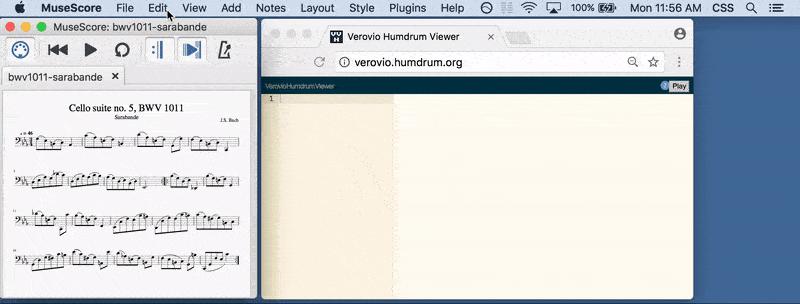

Session Outline Workflow to Generate an MEI File Music documents used in this tutorial can be accessed in this Open Science Foundation repository.

#Convert musescore to musicxml install
Instructor may also wish to review the MEI Guidelines in advance.īoth instructor and participants will need to install software identified in the tutorial used to complete different parts of the workflow. Instructor should review and familiarize themselves with the tutorial in advance, paying attention to the examples and files provided in Additional Instructional Materials below. There you can ask questions and file issues if you think something should be handled differently, or if you would like to request a new feature, such as a new attribute or element. Another venue for communicating with MEI maintainers is their GitHub repository. The best option for reaching out for help is by participating in the MEI community, primarily by writing to the MEI-L mailing list, which welcomes questions from encoders of all levels. With this tutorial, we aim at supplementing the guidelines with summaries and examples relevant to digital library work. The MEI guidelines remain the primary documentation for the header and MEI metadata, although they occasionally only marginally cover some components and the examples tend to be simple and do not showcase more complex situations that could be found in the real world. This tutorial will not provide in-depth coverage of the MEI guidelines, applying XSLT (eXtensible Stylesheet Language Transformations) or schemas, optical music recognition (OMR), other encoding standards, or details of the encoding of the music notation itself, which in this case is left to automatic conversion. Learners will be able to render an MEI file. Learners will be able to identify and select appropriate tools and software for working with MEI. Learners will be able to generate an MEI header from MARC XML. Learners will know where to locate additional MEI resources.

Learners will be able to create various metadata for an MEI file. Learners will be able to generate an MEI file from a music document. Several tools and software (open source and proprietary) will be introduced during the workflow that are necessary for different steps of the process. In this tutorial, we aim to present a straightforward workflow that will enable new encoders to (a) generate an MEI file using music notation software and (b) create various types of metadata in the MEI header section. Getting started with music encoding, however, can be intimidating. Additionally, there may be interest to use music encoding as part of a digital scholarship project or in training of faculty or students who are interested in encoding as a means of close reading, analysis, or the creation of digital editions. Although both formats are recommended by the Library of Congress, unlike MusicXML, MEI provides greater affordances for encoding semantically and structurally rich metadata and music notation, as well as the ability to identify relationships between music notation and digital images or recordings. Libraries and archives professionals may need to create encoded music files (MusicXML or MEI) in order to ensure preservation or long-term access to music documents. These guidelines present a core set of rules for the representation of symbolic, physical, and intellectual aspects of music notation expressed using an XML schema. While there are a number of different formats in use for marking up or encoding music, including MusicXML, Humdrum, and Plaine & Easie, the focus of this tutorial is on applying the MEI guidelines (version 3.0.0). The MEI is a community-driven effort to create an open source representation of music notation in a machine readable structure. In this tutorial, we provide an introduction to encoding music documents according to the Music Encoding Initiative (MEI) for people engaged in digital library work. Library & information science (LIS) faculty Instructional Partnersįaculty in music, performing arts, theatre, literature Work is underway to rewrite the MEI Guidelines and release version 4 soon. Please note that the MEI Guidelines used in this tutorial are version 3. This tutorial can be used for a hands-on workshop or for online learning.


 0 kommentar(er)
0 kommentar(er)
